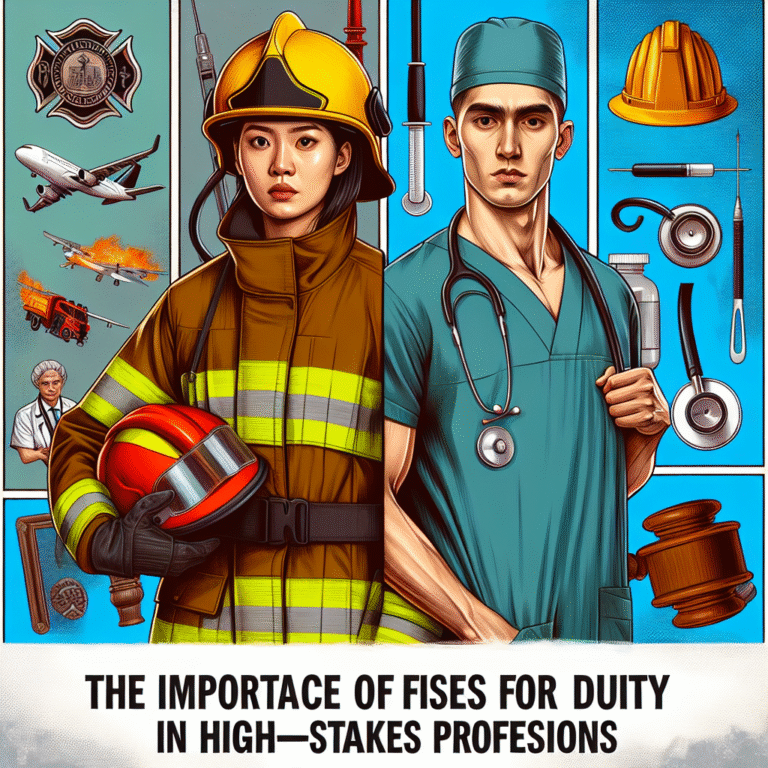
Introduction
In today’s fast-paced and often stressful work environments, the issue of workplace violence has becoming increasingly urgent. Companies across various sectors—from corporate offices to manufacturing plants—are grappling with a pressing question: Workplace Violence: Are Your Employees at Risk? In a world where emotional and psychological stressors abound, understanding the indicators of workplace violence and implementing effective prevention strategies is essential for fostering a safe and productive work atmosphere.
Why It Matters
Workplace violence can range from verbal threats and harassment to physical assaults, leaving lasting impacts on both employees and companies. According to the Bureau of Labor Statistics, there were approximately 20,000 reported incidents of workplace violence in 2020 alone. But the true figures could be much higher, as many cases go unreported. The impacts of workplace violence go beyond physical injuries; they can lead to poor morale, increased absenteeism, and substantial financial losses.
This article delves deep into the signs of workplace violence, provides case studies illustrating its consequences, and offers actionable insights on how to mitigate risks. If you are a business owner or an HR manager, understanding this topic is crucial for fostering employee safety and well-being.
What Constitutes Workplace Violence?
Understanding the various forms of workplace violence is the first step in addressing the issue effectively. It is generally categorized into four types:
Physical Violence: This includes acts such as hitting, shoving, or any physical attack on an employee.
Verbal Violence: Threats, shouting, or abusive language fall under this category. Such behavior can create an intimidating environment.
Harassment: This includes persistent unwelcome behavior, which can manifest as bullying or psychological abuse.
- Terrorism and Criminal Acts: Incidents that involve an external party, such as robberies or terrorist attacks, also fit into this definition.
Statistics That Matter
To grasp the severity of the issue, let’s look at some staggering statistics about workplace violence:
| Year | Number of Incidents | Estimated Financial Loss |
|---|---|---|
| 2018 | 19,000 | $30 million |
| 2019 | 20,000 | $35 million |
| 2020 | 21,000 | $40 million |
| 2021 | 25,000 | $50 million |
These figures are alarming, and they highlight the critical need for organizations to ask themselves: Workplace Violence: Are Your Employees at Risk?
Case Studies: Real-Life Examples of Workplace Violence
Case Study 1: The Tech Firm Incident
In 2019, a prominent tech company faced significant backlash when an employee opened fire in the workplace, resulting in three casualties. This incident failed to prompt the company to take adequate precautions beforehand, despite having prior reports of aggressive behavior.
Analysis
This tragedy underscores the need for an open communication culture where employees feel comfortable reporting concerns. Establishing a protocol for intervention and support for at-risk employees can make a difference.
Case Study 2: Retail Store Harassment
A major retail chain reported an increasing number of harassment complaints from employees on the floor. The management initially dismissed these claims until a video went viral, showcasing verbal abuse by customers toward staff.
Analysis
This situation illustrates not only the risk of external violence but also the importance of employee training to handle such scenarios effectively. Implementing customer interaction guidelines can help mitigate risks.
Recognizing the Signs: Early Warning Signs of Workplace Violence
Being proactive requires knowing the signs that an employee may be at risk of perpetrating or becoming a victim of workplace violence. Common indicators include:
- Changes in Behavior: Sudden mood swings, irritability, or isolation
- Expressing Ideations: Verbalizing frustration or aggression about work or colleagues
- Substance Abuse: Increased reliance on alcohol or drugs
- History of Violence: Past incidents, either at work or in personal life
Important Note
Just because an employee displays one or more of these signs does not automatically indicate they will engage in violent behavior. However, it’s essential to foster an environment where concerns can be addressed without fear of retaliation.
Creating a Safe Workplace Environment
Now that we recognize the risks, what can organizations do to proactively address workplace violence?
Develop Comprehensive Policies
Draft and communicate clear workplace violence prevention policies. Make sure all employees have access to these guidelines and understand them fully.
Training and Awareness
Conduct regular training sessions to inform employees about workplace violence, how to recognize early warning signs, and the proper procedures for reporting incidents.
Table: Training Topics for Employee Awareness
| Topic | Description | Frequency |
|---|---|---|
| Understanding Violence | Types and forms of workplace violence | Bi-annual |
| Reporting Procedures | How and to whom incidents should be reported | Quarterly |
| Conflict Resolution | Techniques for de-escalating potential conflicts | Monthly |
Emergency Response Plans
Having a solid emergency response plan is crucial in case an incident occurs. This plan should include:
- Procedures for evacuating employees
- Communication channels to inform authorities
- First-aid training for employees
The Role of Management
Management teams must lead by example to create a culture of safety:
- Open-Door Policy: Encourage employees to voice their concerns without fear of judgement.
- Regular Check-ins: Management should conduct regular reviews to assess employee morale and address any emerging issues.
- Support Programs: Implement Employee Assistance Programs (EAPs) to provide psychological support to employees.
Technology: An Ally in Safety
Leveraging technology can also enhance workplace safety. Here are a few tech solutions:
- CCTV Systems: Installing video surveillance can deter potential aggressors and provide evidence in case of incidents.
- Mobile Alert Systems: Text and smartphone alerts can help inform employees of emergencies in real-time.
Conclusion
In a world where workplace violence is an undeniable reality, asking the question: Workplace Violence: Are Your Employees at Risk? is not just important; it is vital. Organizations must take proactive steps to not only create a safe and supportive environment but also to instill a culture where employees feel valued and protected.
By implementing comprehensive policies, fostering open communication, and leveraging technology, businesses can mitigate risks associated with workplace violence. The safety and well-being of your employees should always be a priority, not only for compliance but for the overall productivity and morale of the organization.
FAQs Section
1. What are the most common types of workplace violence?
The most prevalent forms include physical assaults, verbal threats, harassment, bullying, and terrorism/criminal acts.
2. How do I know if my employees are at risk?
Look for behavioral changes, expressions of frustration, history of violence, or signs of substance abuse as early warning signals.
3. What should I do if an employee reports violent behavior?
Take all reports seriously. Conduct a thorough investigation, offer support to the affected employee, and follow your organization’s policies.
4. Can workplace violence be prevented?
While not all incidents can be prevented, establishing clear policies, providing training, and promoting a supportive environment can significantly reduce risks.
5. What role does management play in preventing workplace violence?
Management should foster a culture of open communication, implement safety policies, and support employees through resources like EAPs.
In conclusion, addressing workplace violence is crucial for maintaining a healthy work environment. By remaining vigilant and proactive, we can help ensure that our workplaces are safe havens for all employees.















